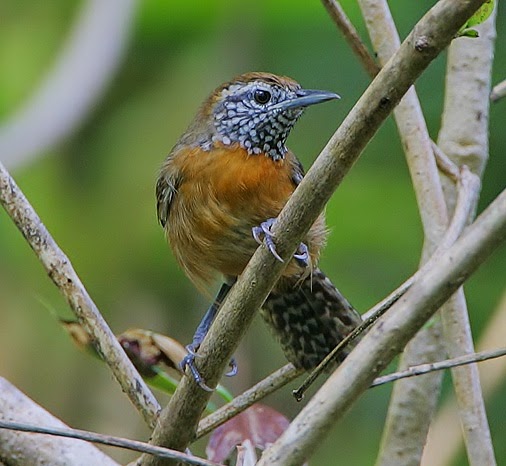 |
| (Photo from PBase) |
Common name:
rufous-breasted wren (en); carriça-de-peito-ruivo (pt); troglodyte des halliers (fr); cucarachero pechirrufo (es); rotbrust-zaunkönig (de)
Taxonomy:
Order Passeriformes
Family Troglodytidae
Range:
This species is found from south-western Costa Rica, through Panama, and into Venezuela, Colombia and the Caribbean island of Tobago.
Size:
These birds are 14 cm long and weigh13,5-18,5 g.
Habitat:
The rufous-breasted wren is mostly found in mois tropical forests, including rainforests and cloud forests, also using second growths and forest edges. They are present from sea level up to an altitude of 1.900 m.
Diet:
They feed mainly on insects, such as beetles, bugs, flies and wasps, but also centipedes and, occasionally, seeds.
Breeding:
Rufous-breasted wrens breed in December-July. The nest is built both sexes, consisting of a bulky, domed structure, with a side entrance, made of grass and leaves. It is placed among tangled vegetation, in the forest undergrowth. The female lays 2-4 white eggs with brown blotches, which she incubates alone. There is no information regarding the length of the incubation period, but the chicks fledge 16 days after hatching.
Conservation:
IUCN status – LC (Least Concern)
This species has a large breeding range and is described as fairly common. The population trend is difficult to determine because of uncertainty over the impacts of habitat modification on population sizes.







